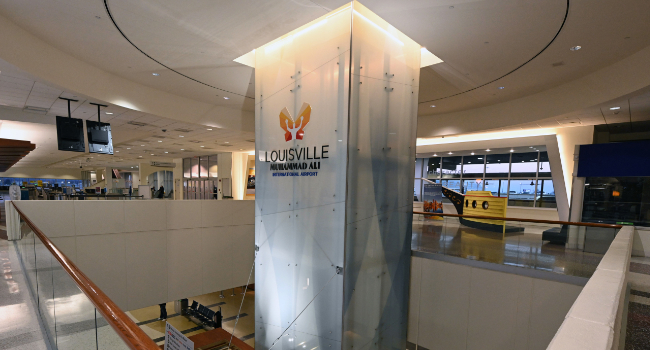
Louisville Muhammad Ali International Airport Transforms Operations Using Data Insights
Genetec Inc., provider of enterprise physical security software, recently announced that Louisville Muhammad Ali International Airport (SDF), a civil and military airport in Kentucky, USA is using Genetec Security Center to drive operational improvements to enhance efficiency and security while improving customer experience.
SDF is a critical hub in the U.S., serving over 4.6 million passengers annually and processing more than six billion pounds of cargo through the UPS Worldport, the center point of their world-wide air network and the largest automated package handling facility in the world. As part of its ‘SDF Next Program’, a $500 million capital improvement initiative, the airport built a new state-of-the-art command center, where a dedicated team oversees everything from airport operations and employee badging to physical security.
Creating a unified airport operations center
Megan Thoben, Vice President of Operations and Customer Engagement at Louisville Regional Airport Authority, noted, “We wanted to design an airport operations center (AOC) and choose advanced technology that would bring information to us. Ultimately, we needed solutions that gave our specialists a more cohesive, data-driven experience while overseeing badging, security, and airside and landside operations.”
After looking at many options, SDF chose Genetec Security Center. The unified platform brings multiple security and airport-specific technologies into one intuitive experience with the option to add new integrations over time. Operators can work from one centralized view to respond to incidents, handle badging tasks, and collect valuable business insights.
Addressing baggage claim delays
One of the first challenges SDF addressed using Security Center was recurring baggage claim delays. By integrating their flight information display system (FIDS) with the Genetec Airport Operations Module (AOM), SDF can now track when a plane reaches the gate and when the baggage handler swipes their card at the carousel.
“If more than 30 minutes pass between the plane's arrival and the badge scan, we get an alert and can dispatch our team to address the issue,” said Thoben. This data not only reduces delays but it also provides airlines with insights to adjust their staffing and operations.
Future plans of expanding coverage with cloud-based solutions
As SDF continues to modernize, the airport is looking to extend security coverage to Bowman Field (LOU), a smaller, general aviation-reliever airport nearby, using Genetec Security Center SaaS. The cloud-based platform will allow SDF to manage both sites from a single system, minimizing infrastructure costs while ensuring comprehensive security monitoring.
Thoben offered advice to other airport leaders: “I challenge other airports to think more broadly about what they can do with the systems they already have in place. There’s so much data that we’re collecting, so how can we use that to get a fuller picture of what’s happening across our airports? That’s exactly what Genetec Security Center allows us to do at Louisville Muhammad Ali International Airport. We’re just scratching the surface of what’s possible, so it’s great having such a supportive technology partner on our side.”